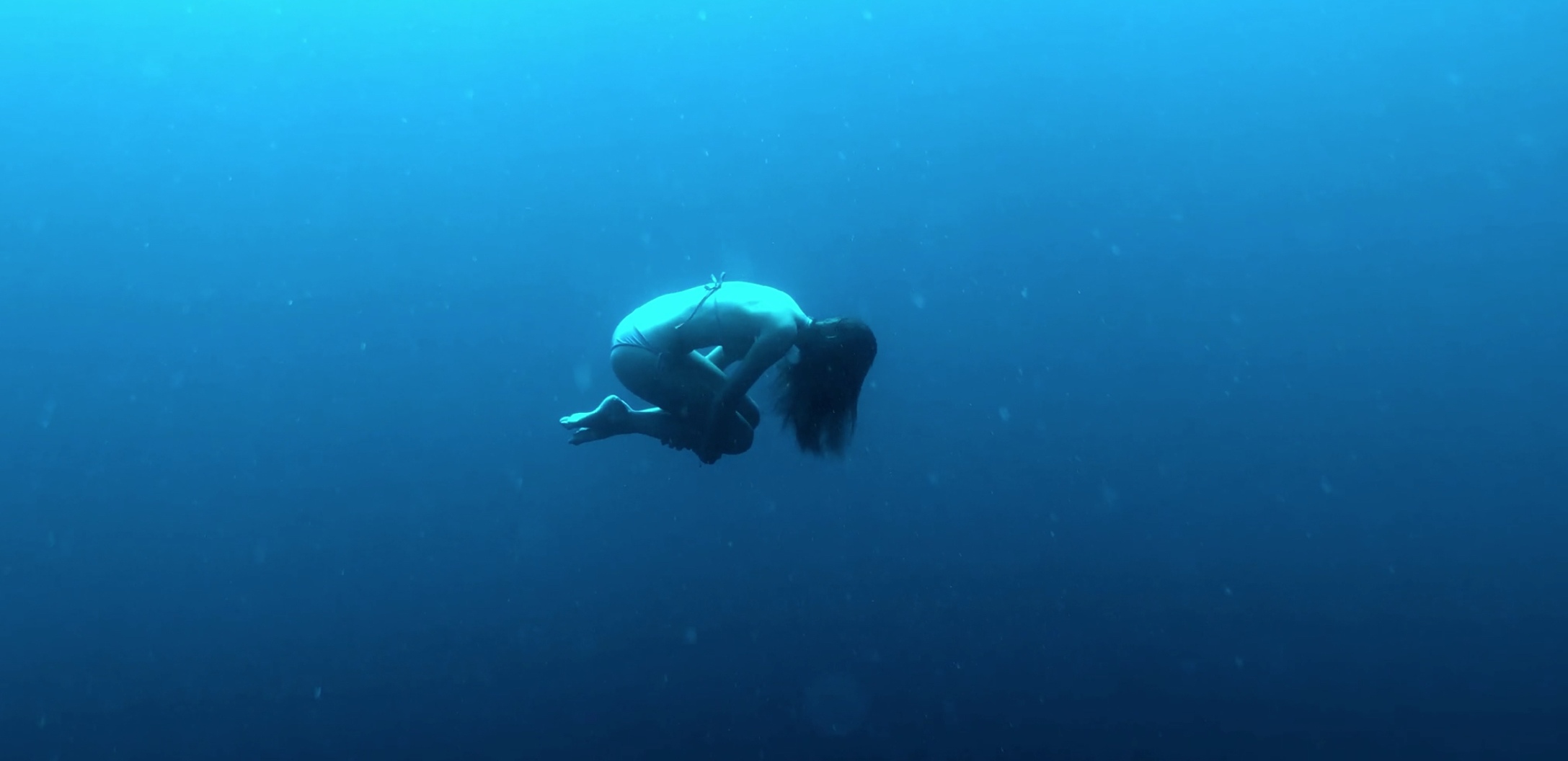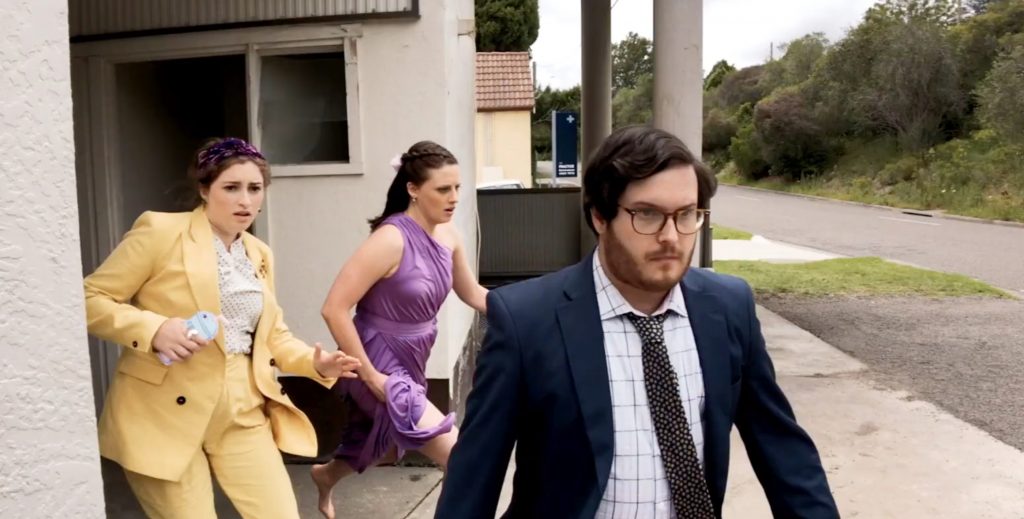Like many great films, Tom F. Pardo’s “Submerged” reveals the beauty below the ocean’s surface. But Pardo’s movie also explores the significance of silence and isolation in the modern world. Shot on an iPhone 8, “Submerged” won the Grand Jury Prize and Public’s Choice Award at the Plug Film Festival. A citizen of the world, the director is currently based in Nice (France) where the film was shot. A behind-the-scenes interview with Tom Pardo follows the movie (below). Click the image to see the film.
Interview with Tom F. Pardo
MMM: How did you develop your skills as a filmmaker?
Pardo: I didn’t go to film school, but I’ve spent the last three years in London where I learned the craft of movie trailer editing. Basically I’ve learned how to tell stories using pictures and sounds to emotionally engage with an audience and make them want to see more. I think it helped me a lot when I made my directing debut with “Submerged,” especially as regards to editing and rhythm. I started editing videos when I was 15, and coming from a business school, I thought at the time that movie trailers would be the best way to combine my background in editing and advertising, as well as my love for film.
MMM: Are there any filmmakers whose work influenced yours?
Pardo: There are many, but if I had to pick three, I would say: Alejandro G. Iñarritu, Terrence Malick, and Cary Joji Fukunaga. Those three directors represent the cinema that I like the most, a mix between magic realism and, in a way, photojournalism, when it comes to the visual style.
MMM: How did you come up with the idea for “Submerged”?
Pardo: From the very beginning, I wanted to experiment and make a film that would rely only on sounds to tell the story, without any dialogue. After talking with several freedivers, they all made it clear that their discipline helped them in a way to escape from the stress of their daily life, and noise pollution was a frequent example. When you know that Cousteau used to call the ocean “the world of silence,” I thought that this would be an interesting theme to explore. And I could relate to that stress and to that meditative state that freediving gives you.
MMM: Could you say something about your casting process?
Pardo: Eva André is a 23-year-old freediver that I met in Nice in a diving club. She had absolutely no experience in acting. First, we talked a lot before production about the character and the story, to see if we could find similarities between her and the role. She told me that freediving was also helping her to get rid of some angst that she had at the time, and she’s also a bit sensitive to sounds, so the role was pretty much perfect for her. Since she had no acting experience, I thought that this would be a good thing to get more to the truth while shooting the scenes. Directing her on land and underwater was pretty easy. I would just tell her exactly what I wanted in terms of movement and emotion, and she would find the natural way of doing it. Sometimes my ideas would not work for her and she would try something else to fit her personality. In other words, I was pretty lucky to have her, because I think that I would have struggled a lot more with somebody else.
MMM: Did much effort go into finding those places? Was there any problem shooting on the tram? Were the people there aware of what you were doing?
Pardo: The location for the breathing scene before the dive was really easy to find. I had already this place in mind when I wrote the script. Eva took care of the location for the underwater scene, because she knew every diving spots in the area. The street scene was shot in front of her boyfriend’s apartment, and the tram was five minutes away from there. I didn’t do extensive location scouts for this film; we only used what we had around us. Surprinsingly though, people in the tram didn’t look much at the camera while we were shooting. I think filming with a phone helped in that way.
MMM: Why did you decide to shoot with a mobile device?
Pardo: I made this film because I was participating in a film festival in Nice that was celebrated the 100th anniversary of the Victorine studios, the iconic film studios created in Nice in the early 20th century, and shooting with a phone was a condition to enter the contest. The obvious advantage for shooting with a smartphone is the price, but also the facility to move around with the camera, without having to do long and labourious preparations before recording. One disadvantage is of course the limited dynamic range and color depth that a phone offers, but I think this is a minor flaw, as we all know that a strong story is always more important than the quality of our equipment.
MMM: What other gear did you use?
Pardo: In addition to my phone, I used a 18mm Moment lens, along with a Movi Freefly to stabilize the shots, and an amazing underwater case called LenzO by Valstech that I paired with a grip. This case could go down to 100 meters underwater, which is quite impressive. Although we didn’t go that deep, it was nice to know that we could do whatever we wanted with it.
MMM: How long did the shoot take?
Pardo: We would shoot a few hours per day to capture the best light possible for every scene, but overall I think we shot the whole thing in 2 or 3 days. The crew was really small: the actress (Eva André), the sound engineer (Fabien Bacquet), and me. I was both director and cinematographer on set, which was scary but also very exciting.
MMM: Did you encounter any problems during the shoot?
Pardo: The scenes on land were pretty straightforward, except one thing: the heat. Temperatures were quite high which means the stabilizer would overheat and shut down sometimes. But the main challenge remained the underwater shots. I couldn’t get a DP specialized in underwater cinematography for this film, so I decided to operate myself. However, operating on breath hold is not the same as operating on land. I had to pass a freediving initiation in a specialized center to learn how to equalize my ears while going down. Then, storyboard everything in my head in order to not waste time on set, as we had only one afternoon to wrap everything. We were supposed to do another day of shooting a week later, but the sea was infested with jellyfish! This made it impossible to get the extra shots we wanted. And finally, I had issues equalizing properly my left ear because of a problem with my eustachian tube, so I had to ask Eva’s boyfriend, a freediving instructor, to capture the shots that were too deep for me.
MMM: The soundtrack is very effective. How did you put it together?
Pardo: The original score is signed by the talented composer Gavin Brivik who lives in L.A. This was my first collaboration with him, and a great one, because we allowed ourselves to experiment with sound on this film. Gavin sent me a few versions with different types of sound and the idea was that I would pick the one I liked the most, but we decided to combine the different versions to create something new. We agreed to add music only during the underwater scene, as it would become the “sound of the ocean” that would make an interesting contrast with the sounds on land.
MMM: Could you say something about your approach to editing?
Pardo: I used Avid Media Composer, which is my prefered choice to cut. Editing was quite easy on this project, as I followed the story structure in my script. I just had to put everything together and pick the best shots for each scene. The trickier part was sound editing, and that needed the help of my friend Alexandre Poirier who polished the sound design and mix. Since we were limited by the quality of the camera, I wanted to compensate that by creating the best sound possible within our budget, to immerge the audience in the story. We often hear that sound in a film is more important than the image, and I completely agree with that. We can forgive a bad image, but not a bad sound.
MMM: Have any advice for people just starting out?
Pardo: Do what I did six months ago, and shoot your first film on your phone! Story is king, not your gear. Write a film that is personal to you and find some friends to make it with. And learn to adapt along the way. I believe that filmmaking is like survival: if you can’t adapt, you’ll die. You’ll always have problems happening along the way, you just have to be prepared.
You can learn more about Tom F. Pardo’s work at his website, Instagram account, and Vimeo page.
# # #
The editors of MobileMovieMaking have chosen “Submerged” as the Mobile Movie of the Week.




 Previous post
Previous post
 Next post
Next post





